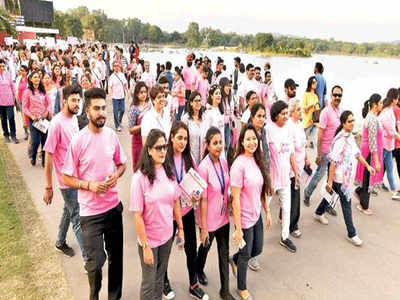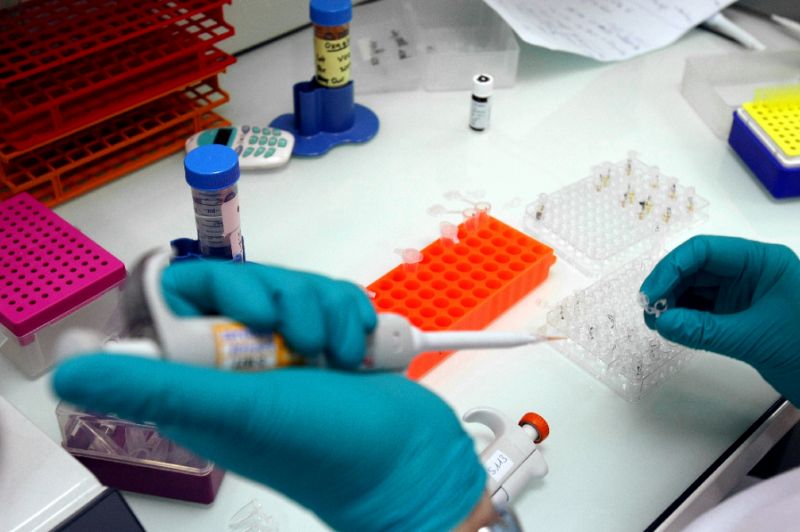New Delhi|HL
WORLD TRAUMA DAY 2024″”EVERY LIFE MATTERS, EVERY SECOND MATTERS”
In India, it is estimated that one million people die and 20 million are hospitalized every year due to injuries. NCRB 2022 reported 4,30,504 deaths due to injuries in 2021. Maharastra with a population share of 9.1% has reported highest no of accidental deaths (66,656) contributing nearly one-seventh (14.7%). UP, the most populous state (16.9% of country’s population) has accounted for 42930 (9.2%) of accidental deaths. Rajasthan accoun32360 (6.1%) annual deaths due to accidents.
But the truth is more alarming. Most of satates do not have Trauma registry and updates. So, these are critically under reported data.
Trauma is major leading cause of death in young population. And millions are living with permanent disability (DALY: Disability adjusted life years). It is an alarming data.
Trauma can have far-reaching economic implications including and costs of hospital care, permanent disability or loss of the primary breadwinner significantly increases financial burden on state health system along with economy loss, which can push families into poverty.
Trauma system is from injury to rehabilitation. Even in 21st century, we are lacking at every step of trauma system including:
- Poor emergency transport system causing ‘Golden hour’ concept is still an unachieved goal.
- Lack of educating population and schools for first responder,
- Lack of strengthening of different levels of trauma center’s man power and capacity building, inter-center communication and limited trauma dedicated teams of health care workers.
- Poor rehabilitation services.
- Virtually non‐existent of trauma system in most rural and semi‐urban areas in India.
- Gross discrepancy in pre‐hospital services between urban and rural settings, as well as between paying and non‐paying patients
All these lacks are causing Very high mortality and morbidity (16 times) for the same Injury severity in India as compared to western data.
World Trauma Day stresses that, according to the WHO, trauma is a major cause of death and disability across the world. WHO research has shown that at least fifty percent of road deaths occurring in developing countries could have been prevented with effective intervention after trauma had occurred
Trauma is the disease (injury) only, stop calling it God’s will. “Getting the right patient to the right place at the right time for the right care” will decrease overall burden of trauma.
How can improve ‘Indian trauma system’:
It must be constructive, collaborative and comprehensive approach between policymakers and health care system.
1. “We need to establish hospital-based trauma registries as soon as possible and network all trauma care facilities to generate good data. It is already late.” Under-reported trauma data will never help to reconstruct strong policies.
2. Prevention of injuries:
Improving road conditions and vehicle safety standards,
Traffic law enforcement,
Awareness programmes with collaboration of traffic police, NGOs and health care workers.
3. Strengthening of ‘Pre-hospital care’:
- First responder: education and training of population and students.
- Standard transport protocol including proper site distribution of transport services, quick response by transport team, trained EMTs, established communication between referral trauma centres,
4. Trauma centres:
- Capacity building of trauma centres must be free from political influences. It should be depending on regional trauma burden and facilities availability.
- Established communication between level 1 – 4 trauma centres to avoid unnecessary load on level 1 centre only.
- Creating more and more trauma dedicated teams by increasing PG/super-speciality seats of trauma surgery for surgeons and other training courses along with ATCN training for nurses.
- Ensuring quality care of trauma centres based on standard parameters.
5. Rehabilitation: Constructive approach for the trauma victims to help them to get back their routine lives with the collaboration of NGOs to provide prosthesis on free or minimal cost.
6. Funding policies for emergency services: Implementing more effective financial protection mechanisms in India against the high out-of-pocket expenditure incurred on trauma.
7. “State Trauma system model” Concerted efforts are needed at the state level to address these issues and formation by each state based on their geographical distribution, trauma burden, available resources and five-year goals.
8. Trauma Quality improvement programs.
Although governments are spending large funds but the lack of collaboration, assessment of shortcomings leading the same status.
The Government of India has attempted to address these issues through the recently amended Motor Vehicle Act Amendment Bill of 2019 by increased fines by up to five times and now includes imprisonment as a deterrent against traffic violations, recall of defective vehicle parts by automobile companies, holding builders accountable for poor quality of road infrastructure, and making vehicle owners criminally liable for violations committed by juvenile drivers. Because the Bill came into effect in September, 2019, we cannot yet comment on its possible impact, but, notably, the Bill has not been implemented uniformly by all the states.
A Good Samaritan Scheme is also welcomed.
Many more goals to be achieved.

Dr. Dinesh Gora (Trauma surgeon),Assist. Professor, Trauma Surgery
Incharge- Polytrauma Care ,SMS Medical College & Hospital, Jaipur.










